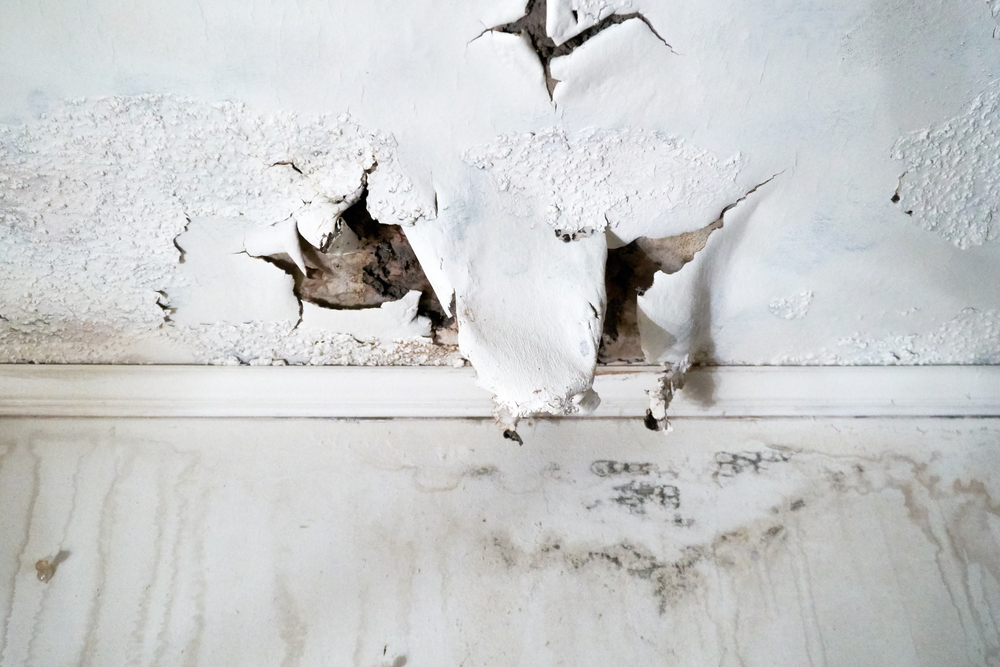What Wisconsinites Need to Know About Water Damage & Mold

No one thinks it’s going to happen to them, until it does. Your sprinkler line broke and your basement is flooded. That picture of your Uncle George in his green and orange plaid trousers is floating in two feet of water in your basement. The cat is soaking wet looking like a drowned rat standing on the piano because there is no where else for him to go. If this ever happens to you, you will most likely have to deal with some water damage. Here is what you need to know.
What is Water Damage?

According to TheWaterPage.com, water damage can be caused by internal and external conditions. Two examples of internal conditions are broken appliances and leaky foundations. External conditions could be things like humidity, floods, and heavy rain or snow falls. Water damage coming from these sources can be easily spotted by an excess of water, perspiration, and even mold. While the initial cause of water damage might start out small, such as with a broken washing machine, the resulting damage can destroy homes and businesses if the issue is not addressed immediately.
Classes of Damage Severity
Not all water damage should be looked at or treated in the same way. This is because there are multiple classes of damage severity. Water damage severity is rated on a scale of 1-4, with 1 being the least destructive and 4 being the most problematic. With Class 1 water damage, the materials in the home or business absorb a little water, but not enough to do severe damage. Class 2 water damage has a quicker evaporation rate than Class 1—due to the amount of moisture this would entail, the amount of damage done to the materials would increase. This class often affect carpet-like materials. Class 3 damage has a quicker evaporation rate than Class 2 and can affect materials, such as the walls and interior of the building. Class 4 will require specific procedures for the severity of the damage and can affect the foundations of buildings like concrete.
Levels of Cleanliness
There are also different levels when it comes to the cleanliness of the water. There are three categories for water. Category 1 is clean water. This water is relatively safe since it involves water coming from sinks, tubs or appliances. Category 2 is gray water. This water can cause sickness—not quite to the extent as black water, but it is nevertheless contaminated. This includes incidents such as broken toilets. Category 3 is black water which includes incidents like sewage overflow. As you might imagine, black water is going to be quite contaminated!
Let’s Talk About Mold

Mold is such a common issue here in Wisconsin that the Official Website of the City of Milwaukee even has an entire page all about it. On the page, it goes into detail about how mold can easily be brought indoors via windows, doors, air conditioning systems, and shoes. You should know that mold can come in a variety of colors, including gray, black, and green, and often grows on ceilings, walls, under carpets. and on windows. More often than not, it is a result of some form of water damage.
Due to our close proximity to Lake Michigan, mold is something you should definitely take seriously. One of the key ingredients for mold growth is moisture. Our lakeside state certainly has plenty of that! Our humidity levels are typically around 72.5%—mold only needs a humidity level of 60-80% to grow. Other than high humidity levels and water damage, mold can be brought on by roof leaks, improper ventilation in bathrooms, water buildup, and plumbing leaks. As you look around your home for signs of mold, this is what you’ll want to look for:
- Your chimney smells weird.
- The paint is bubbling up on your walls.
- You’re coughing, but don’t have a cold.
- Your floor feels squishy.
- Your house smells musty.
- If you have asthma, it’s acting up more than normal.
Call on Kelmann
As you stand there looking at your soaked cat and family heirlooms floating around, you may wonder what you could have done to prevent this and what steps you might possibly take next. While we may not be able to save Uncle George’s photo, the cat will dry off and we will do everything in our power to ease your burden by getting your home back to its pre-damage condition. Should you find yourself in need of our services, call us at (414)774-3799). We are here for you!
Interested in Preventing Water Damage?
We understand how stressful even the idea of water damage plaguing your home can be. To help, we’ve provided some additional reading material. If you would like to learn more about different ideas of how to prevent water damage, check out some of these other blogs!
Extra Reading Material
Flood Proof Your Valuables: Tips for Avoiding Water Damage
My Basement Has Flooded! Now What Do I Do?!
How To: Dry Out a Hidden Water Leak or Water Damage
